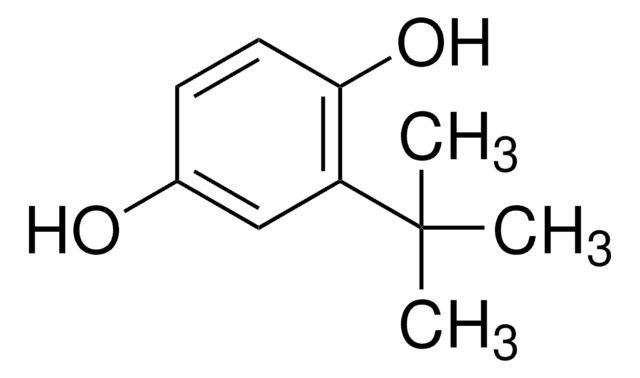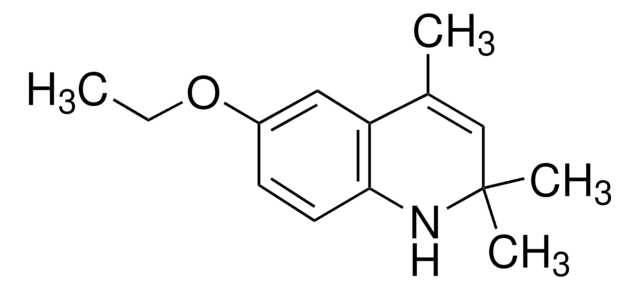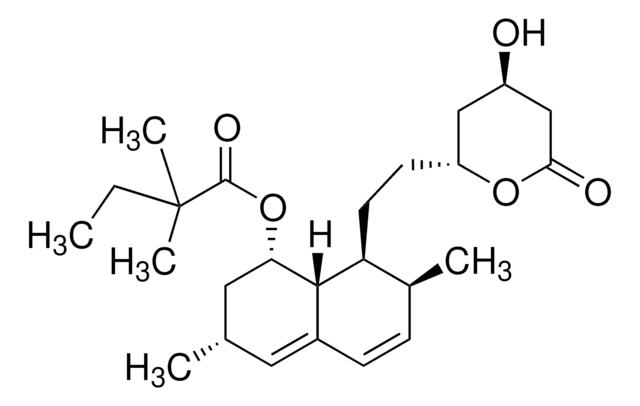Wichtige Dokumente
PHR1304
Butyliertes Hydroxyanisol
Pharmaceutical Secondary Standard; Certified Reference Material
Synonym(e):
2(3)-t-Butyl-4-hydroxyanisol, 2(3)-t-Butylhydrochinon-monomethylether, BHA
About This Item
Empfohlene Produkte
Qualität
certified reference material
pharmaceutical secondary standard
Qualitätsniveau
Agentur
traceable to Ph. Eur. B1212000
traceable to USP 1083008
Dampfdichte
6.2 (vs air)
API-Familie
butylhydroxyanisole
Analysenzertifikat (CofA)
current certificate can be downloaded
Selbstzündungstemp.
599 °F
Methode(n)
HPLC: suitable
gas chromatography (GC): suitable
mp (Schmelzpunkt)
58-60 °C (lit.)
Anwendung(en)
pharmaceutical (small molecule)
Format
neat
Lagertemp.
2-30°C
InChI
1S/C11H16O2/c1-11(2,3)9-7-8(13-4)5-6-10(9)12/h5-7,12H,1-4H3
InChIKey
MRBKEAMVRSLQPH-UHFFFAOYSA-N
Suchen Sie nach ähnlichen Produkten? Aufrufen Leitfaden zum Produktvergleich
Allgemeine Beschreibung
Anwendung
Hinweis zur Analyse
Sonstige Hinweise
Fußnote
Ähnliches Produkt
H-Sätze
P-Sätze
Gefahreneinstufungen
Aquatic Chronic 2
Lagerklassenschlüssel
11 - Combustible Solids
WGK
WGK 2
Flammpunkt (°F)
241.9 °F - Pensky-Martens closed cup
Flammpunkt (°C)
116.6 °C - Pensky-Martens closed cup
Hier finden Sie alle aktuellen Versionen:
Besitzen Sie dieses Produkt bereits?
In der Dokumentenbibliothek finden Sie die Dokumentation zu den Produkten, die Sie kürzlich erworben haben.
Kunden haben sich ebenfalls angesehen
Unser Team von Wissenschaftlern verfügt über Erfahrung in allen Forschungsbereichen einschließlich Life Science, Materialwissenschaften, chemischer Synthese, Chromatographie, Analytik und vielen mehr..
Setzen Sie sich mit dem technischen Dienst in Verbindung.






